NuScale, a U.S.-based company, has been touting its breakthrough technology: a new breed of smaller—and cheaper—nuclear reactors that Popular Mechanics suggests could "save American energy." Advocates believe these new reactors might save us from climate change, too, since nuclear power plants produce no direct carbon emissions.
Despite the PR campaign, NuScale faces challenges. Some of the towns that initially planned to buy power from the first NuScale facility have backed out, and it's not yet clear that a NuScale reactor will ever accumulate enough funding to be built in the U.S.
That goes to show: When it comes to climate change, there are few solutions as controversial, or as complicated, as nuclear power. There are bullish engineers who say its our only choice and environmental activists that say it's a terrible mistake. Here's what you need to know.
📚 Jump to section:
How does nuclear power work?
You can think of a nuclear reactor as a super-powered tea kettle: it's a big mechanism to boil water. That water then spins a turbine that contains electromagnets, converting the kinetic energy of the moving steam into electricity.
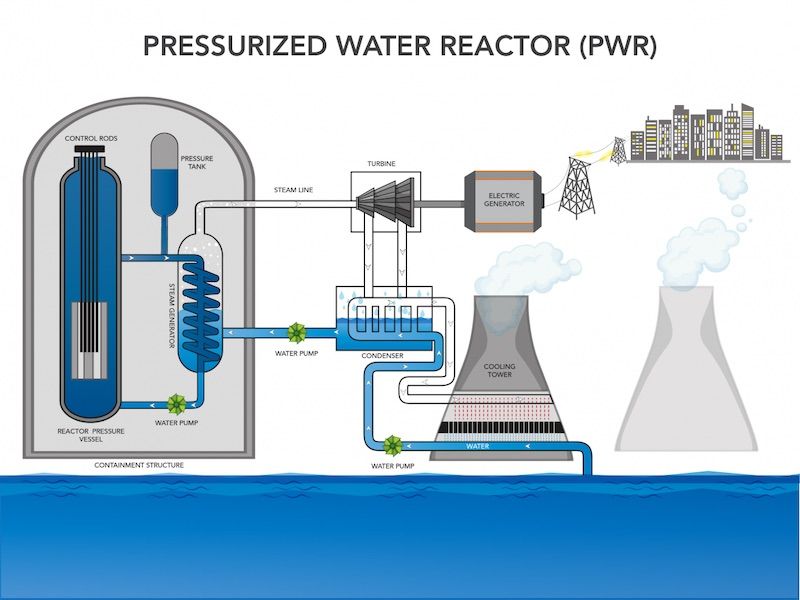
Gas and coal and oil-powered plants also use turbines to generate electricity. The difference here is how a nuclear reactor manages to generate heat: through nuclear fission, or the splitting of atoms.
Today's nuclear fuel is typically uranium, an unstable element that can be easily prompted into a nuclear chain reaction–which means many atoms begin splitting, one after another, releasing enormous quantities of heat.
To form fuel, uranium is first processed into small pellets; these are set inside metal rods. Hundreds of rods are used together inside a reactor vessel, where they are immersed in water to help control the rate of fission, preventing the chain reaction from turning out of control.
This water also serves as a heat conveyance: as it warms, it moves into a second chamber, a steam generator, where another pool of water is boiled and piped into the turbine. Those big towers you may have seen before? They're just emitting steam. Some steam is also returned to a "condenser," where it returns to liquid form to be used again.
How clean (and safe) is nuclear power?
Nuclear power has a scary reputation, in part because of its association with nuclear weapons, in part because of a few catastrophic power-plant accidents. The meltdown at Chernobyl, dramatized in a 2019 HBO miniseries, is the most famous, but there was a major meltdown in the U.S. in 1979, too, and a tragedy in Japan less than ten years ago. The problem, generally, is fuel that grows overheated and releases radiation beyond the plant.

Radioactivity is silent, invisible, and potentially deadly. That gives nuclear plants an eerie aura. One researcher has actually measured the extent of what he calls "nuclear dread"—a fear attached to the word "nuclear" that is far larger than is rational.
In actuality, nuclear power has caused relatively few deaths. Estimates vary, but a safe estimate of deaths at Chernobyl is in the thousands; as many people can die in a single year in coal-mining accidents. Far more die from lung diseases associated with coal dust. If you average deaths out across the amount of energy each fuel produces, nuclear is far safer than coal—and rivals renewable power as one of the safest forms of power we've got.
Nuclear is among the safest and lowest-carbon power sources out there, though there are concerns about mining and waste.
Still, this is not the only way to quantify danger. Nuclear fuels are non-renewable resources, so extraction is required and waste is produced. Mining has devastated some U.S. water supplies, and since uranium can stay radioactive for thousands of years, how to deal with old fuel is tricky question, one that remains politically charged.
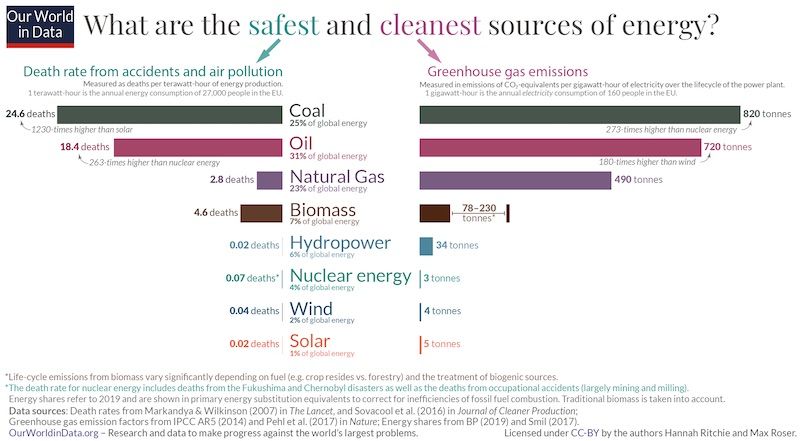
There is one way that nuclear power is very clean: There are no direct carbon emissions. Nuclear power makes up 18% of the low-carbon power supply in developed countries—the second largest source, behind hydropower. In the U.S., nuclear supplies 50% of low-carbon power. Some advocates say that nuclear reactors remain essential as we aim to completely decarbonize electricity supplies.
What is the status of nuclear power today?
Despite nuclear's emissions-free contributions to the world's electricity supply, the sector is not on strong footing. Today's plants are simply old, nearing the end of their lifespans; a quarter the nuclear capacity in the world's advanced economies is slated to power down over the next five years. Unless something changes, the use of nuclear power could fall by two-thirds by 2040. This could be a serious problem for the climate, since often these reactors are replaced by gas-fired power plants that have a significant emissions impact.
Nuclear plants are big, expensive projects—which is why nuclear power appears to be on the decline.
One key problem is that because building nuclear reactors is incredibly expensive. These are big projects that must be custom built on site. In recent decades, the average U.S. plant has wound up costing nearly 3.5 times the initial budget projection. Globally, most plants wind up falling at least ten years behind schedule—and often far more.
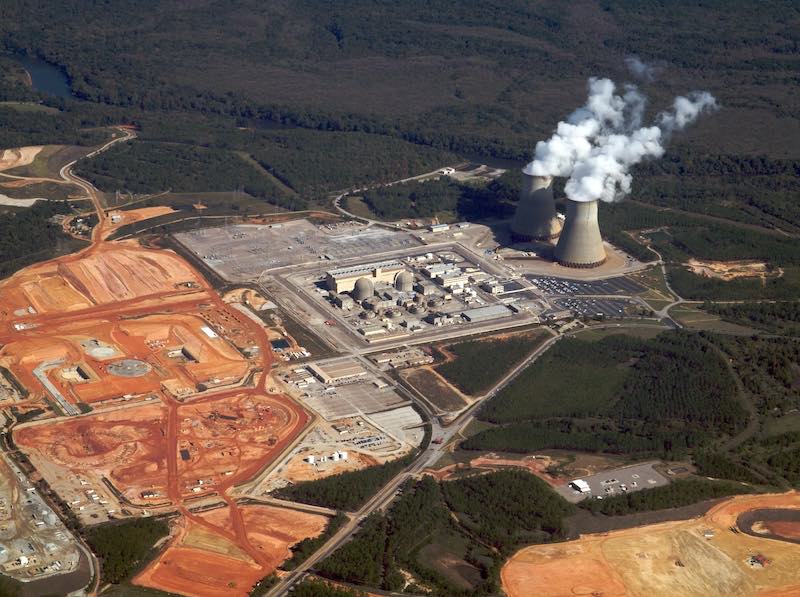
Engineers are exploring the possibility of a new breed of reactors—"advanced reactors," they're sometimes called, or sometimes "Generation IV" reactors, a reference to three earlier eras of designs. These reactors will feature new materials as fuel and coolant, which could wring more energy out of each fuel rod—helping reduce the waste problem. Some of these designs also promise safety improvements, which could save costs by reducing regulatory burdens. Critics contend that some of these ideas are dead ends; they've been pursued for decades with little progress. Most advanced reactors remain theoretical, and are unlikely to come online for decades.
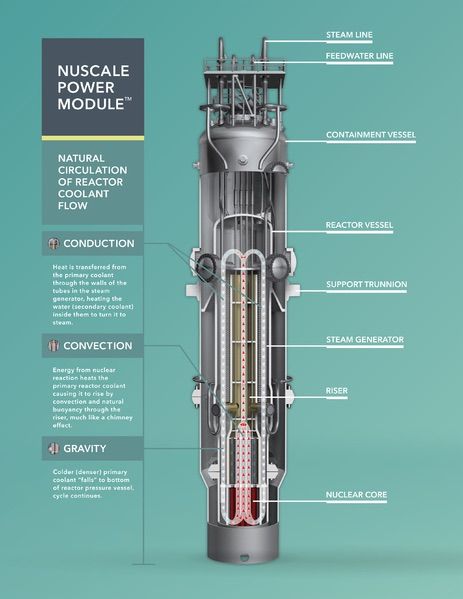
So far, only one new reactor, designed by NuScale, has been closely examined by U.S. regulators. The NuScale design is much simpler than other "advanced" designs: it is simply a scaled-down version of today's reactors with some innovative safety improvements thrown in. (Some consider this a "Gen III+" reactor, rather than Gen IV.)
This design, and others like it, are called a "small modular reactors" (SMR), because they can be manufactured in pieces, on an assembly line, rather than on site. This could solve the problem of cost overruns, as production costs will fall over time.
What role can nuclear play in decarbonization?
Almost no one is suggesting that we rely solely on nuclear power. The price of building solar and wind farms is dropping rapidly, making these very appealing low-carbon power sources. But it's hard to rely on wind and solar power alone, since the sun sets and the wind calms. This, according to advocates, is where nuclear power comes in: It can supply a firm source of power to supplement renewables' unreliability.
Nuclear plants can deliver power even when the sun is down or the wind is calm. But they may be too expensive to find a place in the grid, in the U.S., at least.
Still, the high costs remain a challenge. SMRs will only reduce construction costs if many are built; the first plant remains expensive. NuScale expects to have its own first plant completed by 2030, but even after a $1.4 billion federal investment, the company projects the cost of electricity will average out to $55 per megawatt hour—substantially more expensive than many current solar and wind projects. The proposed plant needs to attract more customers before construction can begin. Will they opt in when there are cheaper choices?
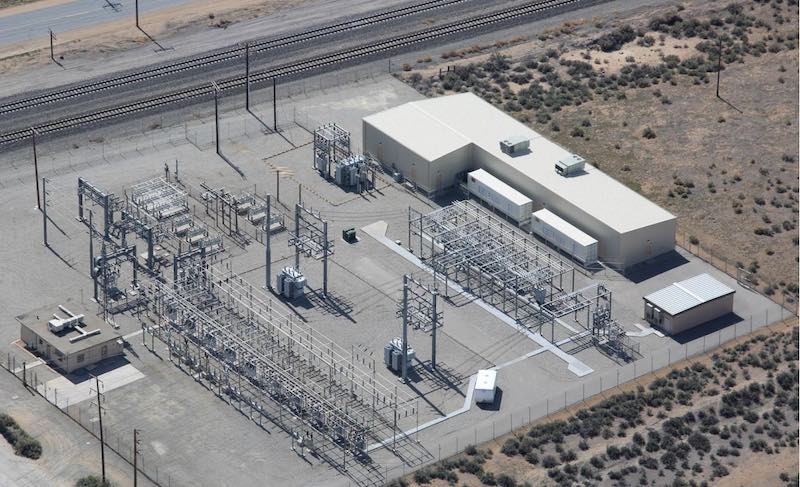
There are other emerging solutions for the intermittency problem. Battery storage, once exorbitantly expensive, has been rapidly dropping in price. A team of analysts at the UC-San Diego Deep Decarbonization Initiative examined the economics of nuclear, and found that it would take hundreds of billions of dollars in government subsidies to ensure SMRs were viable before mid-century. The team concluded that "barring some dramatic policy changes, it is most unlikely that nuclear power will be able to contribute to decarbonization in the United States."
That said, NuScale and other nuclear producers may yet find paths to viability. A company called Oklo has announced plans to build very small advanced reactors to serve remote rural communities and other customers far from the grid. These reactors might spark a wider rethinking of nuclear that streamlines the regulatory process, lowering the cost of grid-scale nuclear plants.
Overseas markets might prove more welcoming, too, jumpstarting production and eventually bringing reactor prices down worldwide. Nuclear does make better economic sense in smaller countries that have limited solar and wind capacity; NuScale is pursuing a project in South Africa. The government in the United Kingdom has expressed its commitment to nuclear, too.
Still, challenges remain. Each country has its own regulatory process, increasing costs for vendors trying to sell in different markets. And public concerns persist. In Japan, nuclear makes sense economically—even simply an energy-independence strategy. Nonetheless, the 2011 Fukushima disaster in Japan launched a wave of public protests, and Japanese nuclear capacity has been falling since. Politicians are struggling to accommodate both public sentiment and economic realities. It's a reminder that our solutions to climate change can't just work on paper—they have to fit into the sometimes irrational world of human emotions and politics, too.
Read this next:
A simple guide to the Kyoto Protocol
September 14, 2020 · Climate knowledge

